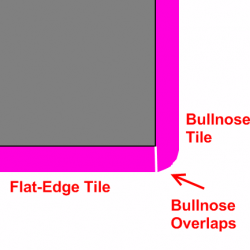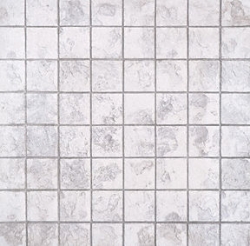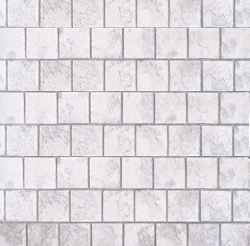Tile Outside Corner
You’ve got a host of problems to manage. What if the corner is not straight or plumb (and few corners are truly straight or plumb)? How do you match up the two tiles on either side so that you get a smooth corner? How do you deal with the problem of slipping tiles?
Frankly, there is no magic bullet. It just takes a few tips and a little patience, and you’ll get it right.
Use Bullnose on One Side, Flat on Other
On one side of the corner, you will use bullnose edged tile. On the adjacent side, you will use tile with a flat edge (i.e., non-bullnose).
This is the only want to make sure that when the two tiles meet, they will form a smooth corner.

Trim Off the Bullnose
So, where do you get the “flat tile” mentioned above? You can either buy tile without the bullnose, or you can use your wet tile saw to trim off just the bullnose part of some tiles. Do not go too far; just the bullnose. And don’t worry, you won’t notice the smaller dimensions if you’re judicious about trimming off only the bullnose.
Don’t worry about any special skills needed to trim the bullnose off. This is an extremely simple cut to do with a wet tile saw.
Bullnose Overlaps Flat-Edged Tile
Now, make sure that the bullnose overlaps the flat-edged tile. The bullnose is the “show” part of the tile. The cut-off flat time may have some minor ridges, but this will be covered up by the bullnose.
Tile Both Sides of Corner Simultaneously
Ah, now here’s a great tip. Do not tile an entire column of bullnoses upward, stop, and then tile the flat-edged tiles upward.
Instead, do a bullnose and its around-the-corner neighbor. Then the next one up. Then the next one, and so on.
Stacked Tile Design, Not Overlapping Design
Now, this is no requirement, but it’s a helpful thing–unless you’re really confident about your tiling skills, you will find that the stacked tile design is much easier than the overlapping tile design when working with corners.
Note that by “overlapping” we’re not talking about bullnose overlapping the flat-edged tiles in the tip above. This is an entirely different thing, where you lay the tiles out in a grid fashion:

